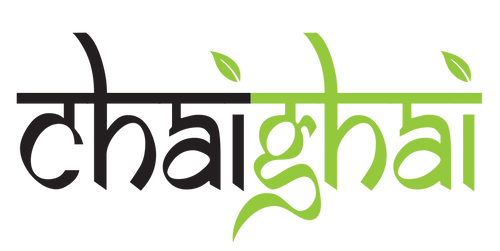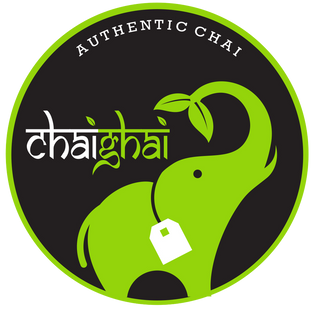“Wish that the warmth of Bonfire, sweetness of Gur and Rewri at Lohri remain with you forever.”
– Sonal

The mythology of an ancient culture can be passed on from generation to generation, preserved through celebrated storytelling and embracing past rituals. Through the dark days of the long, arduous winter we look for the time when light and warmth begin to reenter our life. In ancient Indian culture this is practiced by celebrating Lohri every year on the longest night of the year, known as the winter solstice. This year, that takes place on January 13th, 2022. The traditions of Lohri, an ancient Indian folk festival, are rooted in the beginning of the harvest for a new season and how important light is in helping crops grow and be plentiful. With the bonfire being such an integral part of Lohri traditions, the warmth of the flames mixed with the practices performed by family and friends, brings the community together to celebrate everything they hope for during the following year’s harvest. Joined together through dance and songs, people connect and praise the Gods who bless their harvest. While Spirituality has long been embedded in Indian culture and mythology, these celebrations are a catalyst for spiritual awakenings that further their faith. Through rituals they asked the harvest gods to bless their upcoming yields. It is these cultural celebrations that we keep intact by passing them from our previous Indian generations to further your understanding of our culture. Happy Lohri from Chai Ghai and may the light of the new season bright you days.
Origin of Lohri - Origin of Lohri Festival

What is Lohri?

Lohri has its roots in the frozen tips of the Northern parts of India under the shadowy peaks of the Himalaya Mountains. The winter solstice marks longer days brought on by the sun moving into the Northern Hemisphere. Chai Ghai’s very own Open Hearted (Open Hearted – Chai Ghai) tea is harvested in the Himalayas in a region revered by tea aficionados as the greatest place on earth to grow tea. This small mountain valley is called Darjeeling, and was once a part of Nepal, but eventually became a part of India. The richness in the soil and extremely high altitude makes this valley Earth’s most favourable location for growing tea. We have selected the finest gardens there to produce Open Hearted, which is classified as a Pure Vibe for its purity and unadulterated flavour. Since quality is paramount, we harvest tea leaves after the second monsoon of the year when the soil is the richest. Since we farm our tea in India, we say our own prayer during Lohri in the hopes to be blessed with a plentiful crop for the season. The name Open Hearted was derived from its high antioxidants which foster good cardiovascular health. The pure vibrations embodied in every sip of Open Hearted can only be found in the quiet stillness of frozen peaks of the Himalayan Mountains. These pure vibrations spread through our body with every sip, opening our chakras and allowing clean, pure energy to flow through them.
Lohri is celebrated as the ground begins to thaw allowing a new season of crops to be planted. The Lohri folk festival is observed by Hindus, Sikhs and Muslims to pray for an abundance of light and warmth for the upcoming harvest to flourish. All good ancient mythology is not complete without a mythical figure. For Lohri that mythical figure is Dulla Bhatti who was an Indian landlord and rebel. He is famously known as a type of Robin Hood, who would give what he took to the poor. He also rescued two innocent girls from being sold into slavery during the time of Akbar, the third emperor of the Mughal dynasty. After doing this, he arranged for the girls to get married and lit a bonfire to get the blessing of Agni, while singing and dancing around its flame. For this reason, the bon fire is central to the rituals performed on Lohri. Dulla Bhatti’s legend remains intact in the celebration and rituals that surround this harvest festival.

Why is the Bonfire so Important During Lohri?

Lohri ushers in light and warmth for the coming season of the harvest with festivities centered around an enormous bonfire that serves as a beacon of light for the celebration. The spirit of the festival Lohri is omnipresent through the honouring of the Hindu Gods Surya (Sun God) and Agni (Fire God). Offerings such as chivda and poha (beaten or flattened rice), phuliya (popcorn) and moongphali (peanuts) are thrown into the bonfire to appease Agni, so he will protect the home and its inhabitants. The bonfire is also a symbol that longer days are returning allowing for crops to flourish. This practice is accompanied with a prayer to symbolize the discarding of the past and ushering in Makar Sankranti, the end of winter in the Hindu calendar. Makar Sankranti is dedicated to Surya in hopes that his light will shine brightly during the days ahead and bring with it prosperity and an abundant harvest for all who honour him. It is custom on Makar Sankranti to fly kites, and kites can be seen covering the skies of most towns in India on this day.

What Food is Prepared for Lohri?

The long-held rituals that are practiced during Lohri focus on rabi (crops) that can be harvested during the cold winter months, including makka (corn), ganna (sugar cane), mooli (radish), and sarson (mustard greens). These important crops are featured heavily in traditional Indian cooking to make recipes such as Sarson ka Saag from mustard greens and Makki di Roti from corn. Dishes like these which feature the rabi crops are traditionally served during Lohri. Milk is also used to make kheer (rice pudding) and is poured out around the bonfire as a further offering to Agni.

Many desserts are also made during the Lohri festival including Gur ki Rewari a famous North Indian dry sweet, made of sesame seeds and Jaggery which is known as Til and Gur in Hindi. It is a type of Gajak, a well-known North-Central Indian dessert. Gur or Jaggery is made from sugar cane and contains antioxidants that prevent free radical damage. Another famous North Indian snack popular during Lohri is Rewri, a crisp toffee like dessert made from gudh (whole sugar) as well as spices such as cloves and cardamom and then coated with sesame seeds. Many of our Chais feature cloves and cardamom and we recommend pairing Mummyji’s Masala Chai or Om Chai with Rewri.
How do Indians Traditionally Celebrate Lohri?

Like most traditional Indian celebrations, Lohri festivals usually have both singing and dancing that are central to the rituals. During Lohri, family and friends sing songs that express gratitude to Dulla Bhatti as well as to their neighbours. The traditional music helps bring everyone together in revelry and happens in concert with Indian folk dancing. Indian dancing, which is renown around the world, is traditionally Bhangra (male performances) and Gidda (female folk dance).The dances bring positive energy to the celebrations, uplifting the spirits of everyone which builds comradery. A dhol (drum) is played while the dancing takes place adding melody and brightness to the festivities. New clothes made from various bright colours are worn as attendees perform these traditional Indian folk dances and sing these traditional songs that bring the warmth of Surya to the crops and the hearts of all who participate.
Agni’s Significance in Indian Culture

Lohri is celebrated with added enthusiasm by families who have been blessed with new marriages or children. As Agni is such an important figure in blessing the union of marriage, Saat Phere (7 vows by the bride and groom) is witnessed during marriage ceremonies. Agni further blesses these new couples through the flame of the Lohri bonfire. The significance of the bonfire during Lohri serves to make the first one after a new marriage union extra special. The bride is adorned in wedding finery and a large feast occurs at her in-laws residence. Likewise, Lohri holds additional significance for newborns as gifts such as clothing or money are offered to the growing family to accompany a grand dinner. Through these practices the sanctity of family, especially new additions to it are at the center of Lohri’s rich history.
2021 Lohri Date for Richmond, British Columbia, Canada (drikpanchang.com)
“Ritual is the passageway of the soul into the infinite”
-Algernon Blackwood

The ancient traditions practiced during Lohri hold the key to bringing the spirit of the harvest to life. The offerings made to Surya and Agni bless the harvest as the winter solstice passes and longer, brighter days are expected ahead. Everything that Lohri represents from the sights, sounds and smells present during the festival, welcome all who celebrate it with light and warmth. The bonfire at the center of the festivities further presents a beacon to symbolize positivity to all those who gather around it. It offers a sacrament to the gods and a new start to the next harvest steeped in the traditions of Indian folklore. As all of our chais and teas are harvested in India along with many of the ingredients, we hold Lohri close to our hearts at Chai Ghai. In order to spread the warmth of this incredible festival we are hosting a Lohri Fire Sale which includes a FREE 50g pouch of Open Hearted Darjeeling tea with every purchase, and 30% off everything. As we seek to bless our harvest of tea and ingredients this year, we will be lighting a large fire, and dancing and singing freely to welcome Agni and Surya to our harvest. We also want to welcome you all to enjoy our amazing harvest of ethically sourced teas from all across India. Farmed in the mountainous town of Darjeeling nestled in the Northern icy tips of the Himalayas to the Southern fishing town of Cochin surrounding by the Indian Ocean, we believe our exceptional quality and authentic recipes will give you an Indian experience like never before. Happy Lohri to you and your family!




